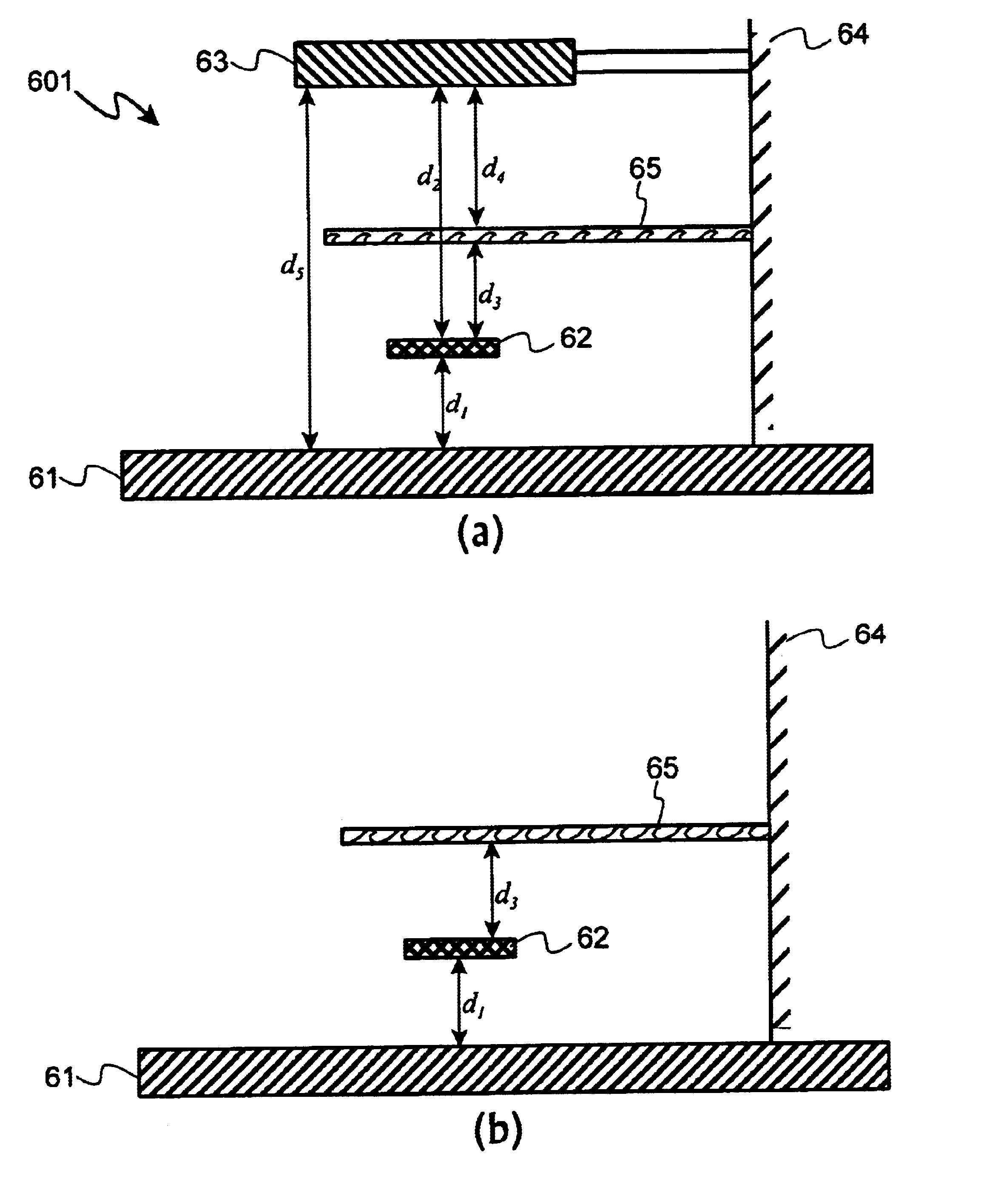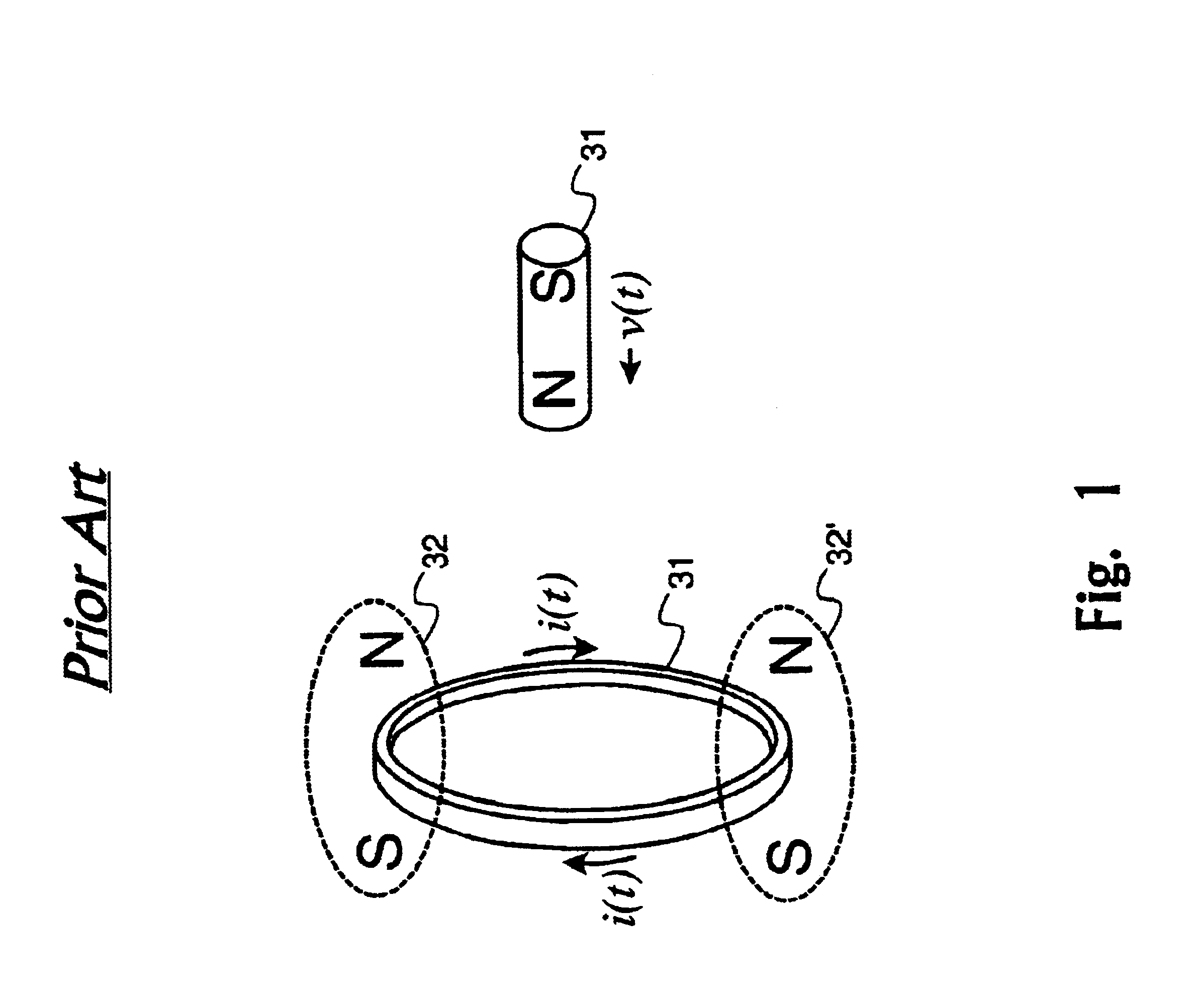Pressure wave sensor using levitated mass
a technology of pressure wave sensor and levitation mass, which is applied in the direction of acceleration measurement using interia force, specific gravity measurement, instruments, etc., can solve the problems of complex resonance phenomena, non-linear response non-linearity, physical and electrical characteristics of the sensor material,
- Summary
- Abstract
- Description
- Claims
- Application Information
AI Technical Summary
Problems solved by technology
Method used
Image
Examples
Embodiment Construction
A microphone is a form of a pressure wave sensor which is designed to detect acoustic waves in the human audible range, and to generate an electrical signal representative of those waves. In a broader sense, pressure wave sensors respond to a variety of physical phenomena, including acoustic waves in air, but also waves in fluids and solids, such as hydrophones, ultrasound transducers, etc.
For the purposes of this disclosure, we will refer to microphones as a specific embodiment option of the present invention, which may be readily realized in alternate forms for other types of pressure waves. Therefore, our presentation of a microphone embodiment is for illustration purposes only, and does not indicate that present invention is limited to such an embodiment and use.
The present invention utilizes, in part, a configuration disclosed in the related and incorporated patent application. The invention disclosed in the related patent application was a highly sensitive device for detecting...
PUM
 Login to View More
Login to View More Abstract
Description
Claims
Application Information
 Login to View More
Login to View More - R&D
- Intellectual Property
- Life Sciences
- Materials
- Tech Scout
- Unparalleled Data Quality
- Higher Quality Content
- 60% Fewer Hallucinations
Browse by: Latest US Patents, China's latest patents, Technical Efficacy Thesaurus, Application Domain, Technology Topic, Popular Technical Reports.
© 2025 PatSnap. All rights reserved.Legal|Privacy policy|Modern Slavery Act Transparency Statement|Sitemap|About US| Contact US: help@patsnap.com



